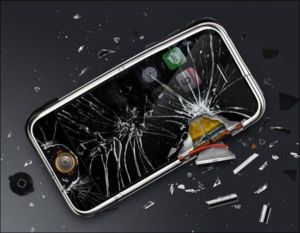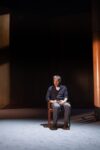 A young woman has thrown herself down an elevator shaft in Chinatown. Her name is Ashley Cordova, piano prodigy, mental-hospital escapee, and heart-inflamer. She happens to be the daughter of cult filmmaker Stanislas Cordova, first name in art-horror, who doesn’t allow himself to be photographed, whose wife was found in the lake at his Adirondack compound with “military fencing.” The suicide intrigues Scott McGrath, and he reopens the case. It’s a sticky subject for him, since he torpedoed his career as a long-form journalist (read: hardboiled detective) with a badly sourced hatchet job on Cordova himself.
A young woman has thrown herself down an elevator shaft in Chinatown. Her name is Ashley Cordova, piano prodigy, mental-hospital escapee, and heart-inflamer. She happens to be the daughter of cult filmmaker Stanislas Cordova, first name in art-horror, who doesn’t allow himself to be photographed, whose wife was found in the lake at his Adirondack compound with “military fencing.” The suicide intrigues Scott McGrath, and he reopens the case. It’s a sticky subject for him, since he torpedoed his career as a long-form journalist (read: hardboiled detective) with a badly sourced hatchet job on Cordova himself.
Thus begins Marisha Pessl’s Night Film, though it is the manner in which the plot unspools itself — in a series of formal bells and whistles — that is bound to draw attention, much as her first novel, Special Topics in Calamity Physics, did seven years ago. In the time being, we’ve experienced yet more technological leaps from novelty to ubiquity. Our fiction — great mirror that it should be —- stares down the reader’s demands as to contemporary realism. Three recent novels — Night Film, Zadie Smith’s NW, and Tao Lin’s Taipei — are called on to catch up, or gracefully decline to keep pace at all.
Night Film begins with screenshots: A New York Times story reports Ashley’s death, a Vulture.com stub (comments enabled: “The man is a sociopath. People like him shouldn’t make movies.”) links back to it, and Time runs a profile in photographs. It’s a plateful of red herrings and setups — exposition in mock prose. Cordova is a cult of personality. There are screenings of his films in abandoned tunnels. Muses turned wives are driven insane. Inez Gallo, AD, looks exactly like Cordova and is twice as much seen. Secret URLs open the fanclub’s “hidden internet.” Cordova’s work is so powerful and disturbing that all copies of Isolate 3 have been destroyed.
Representing our present day would be high-wire in any event. Night Film steers into our simultaneous fluency. However, invented cool (tonight on the secret IRT platform, Thumbscrew!) is, seemingly, for us to ruthlessly decide, and not the author’s place to narrate. Of these quickly sketched conceits, the organization “Amy’s Light” is most convincing. Founded after a Cordova film inspired a copycat murder, it invokes our national tradition of canceling violent TV episodes and delaying action movie releases after mass shootings. But despite much literal insistence that To Breathe With Kings — the only Cordova film where Ashley appears — is an absolutely haunting modern classic, its status isn’t as believable as one moaning ghost might be.
Just who is Stanislas Cordova? McGrath, quoted by Time, provides the composite we’re looking for: “Manson, Jim Jones, Colonel Kurtz.” How sly is Pessl with that third one? But what about: Brando, David Miscavige, Gandalf the Gray? The quip proves unnecessary. Cordova, career-wise, is at the intersection of the following references: Malick’s reclusion, Lynch’s bloodcurdling unconscious, Polanski’s moral dubiousness, and Kubrick’s legacy and cans of Calumet baking soda, if their wives had drowned, civilian fencing wasn’t cutting it for their mountain redoubt film studio, and, needing an eye to stand in for one belonging to the killer — the pièce de résistance close-up in Figures Bathed in Light — they’d decided, hell, why not use mine?
We are mired in a contemporary anxiety about genre, but Pessl’s prose is pretty shameless. A woman in red, a world shrouded in dark. The effect is just as recognizable as black and white film, a 2013 garage band’s pompadours and 1972 guitar pedals; Night Film is in a full-bore anachronistic mode: a noir detective novel. A timeless strategy for dealing with a shifting current is to ignore it completely.
Gumshoe wisecracks are set in italics (“The girl was about as stealthy as a semi hauling a wide load”). McGrath goes down the list of effusive witnesses. (“Some people were so burdened by a secret they’d give it away free to any willing stranger.”) There is a lot of tracking down, piecing together, incessant eavesdropping, and redheaded psychiatric wing nurses run out in front of cars, offering clues. The eventual elite team of detectives includes Nora, an aspiring actress, and Hopper, downtown wastrel and Ashley’s friend from punitive camp — the reference here is not Argento but Scooby-Doo. Which is fine.
In another multimedia touch, Night Film puts an actual face to a fictional name. After a few coy, angled portraits at a piano bench, there it is: Ashley’s obit photo to displace our picture of an ex-girlfriend, or Jennifer Lawrence. In fact, Ashley looks like the lead singer of Skid Row. It’s the only formal gimmick that seems radical. In the end, Night Film is a doorstopping effort to make fiction stranger than truth. As McGrath’s conscience voice-overs, “I’d run in a complete circle.”
(Stranger than fiction: David Lynch, the placid auteur director of feature-length disturbances, allows photographs and has not even once been accused of murder. The role in Twin Peaks Lynch had to play himself was of deaf FBI Regional Bureau Chief Gordon Cole, because in all of deep, dark, deadly Los Angeles there wasn’t an actor that could TALK REALLY LOUD. Also, he’s into meteorology.)
The responsibility of literature is unchanged: to tell us something real, as if we didn’t know any better. The kind of real at an odd remove from our lives; at the periphery of our attention but recognizable to our intelligence as palpably true. At the same time, literary realism would have us on the phone at all times, in bed, propping things up in order to see better. The real world is the technological world. Which world is prone to bluster of just how quickly it is changing everything.
***
Zadie Smith’s excellent NW is a group portrait of four people from northwest London’s council estates. Natalie Blake has married well and had the most professional success.
“Polly not coming?” asked Frank. All four checked their phones for news of their last remaining single friend. The smooth feel of the handset in one’s palm. A blinking envelope with the promise of external connection, work, engagement. Natalie Blake had become a person unsuited to self-reflection. Left to her own mental devices she quickly spiraled into self-contempt. Work suited her, and where Frank longed for weekends, she could not hide her enthusiasm for Monday mornings. She could only justify herself to herself when she worked. If she could only go to the bathroom and spend the next hour alone with her e-mail.
Natalie replies to messages on a computer, just like anyone. “Posts” on “boards” sure to follow. High realism is going to incorporate this whether we like it or not. And some of us are going to zero-fucking-stars disapprove. Smith does not shy away from the small phones in all of our hands. On the contrary, she tells us how they feel. The formal heart of NW is its middle, which employs a device of purely literary origin: numbered sections of varying length; a sentence, a paragraph, a page, a page or two or four at most. The sections have a momentum which technological speed could only hope to emulate. NW has the instantaneousness and ephemerality of life. “If only she could slow the whole thing down! She had been eight for a hundred years. She was thirty-four for seven minutes.”
Tao Lin’s Taipei is an experiment in black box realism. Gchat, drink, text. Affects are flat all around. “Kyle with a bored, self-loathing expression.” (This sentence — to a perhaps effete literary sensibility — was shocking.) The author of Shoplifting from American Apparel blithely names the contemporary: train stops, songs, pills, NYC, Vanity Fair, restaurants with long waits (Pessl has a writer for call back the flakes from a Pastis croissant). Along with all those proper nouns, a truly galling tic: specifying just how long this all takes. Fifteen minutes, “for twenty minutes,” thirty, for an hour, as if technological life had rendered us empty vessels for uncut elapsed time. On the page, it’s effectively hideous — like, horribly disfigured. It’s a prose style as coke-drip, raw throat, a headache one hopes will soon wear off (six-eight hours, reputedly).
Which is the realest of them all? Taipei’s blank slate seems to make a statement, but if so, it’s a curiosity — whenever it’s not outright impoverished. Lin’s autobiographical Paul is dead to the world. On the internet, that terrible democracy, are we not lusting, narcissistic, voyeuristic, really really hungry, wildly desirous of game updates, bigoted, masturbatory, stalk-y and wanton?
Pessl’s approach — Search as storytelling, narrative Wikis and IMDB backstory — makes all kinds of sense but the lucid kind; that way about writing which has always kept it at the heart of the human project. Pessl has her bread and butter extended metaphor; Lin, his base-5 stopwatch. Pessl is nostalgic where Lin is perhaps philosophical or even “nihilistic” — Lin is profligate with scare quotes —though such aggressive blankness could stand for anything once we decide blankness is actually there.
Night Film’s screenshots are of the world. The writing does not feel like the world. Smith’s realism isn’t necessarily psychological, though it talks fast all the way through its appointment. NW is the most uncertain and the most precise; the way it moves feels like the parts of days, its secrets not always dark.
Here is Smith again, doing some traditional scene-work. (Night Film is mostly affidavits; Taipei, itineraries.) Natalie (changed from “Keisha”) looks down her nose at her sister, who has raised her family in the projects.
“I just can’t stand to see you living like this.”
“There it is,” she said.
Natalie Blake, who feared more than anything being made to look ridiculous—or being perceived, even for a moment, to be on the wrong side of a moral question—pretended she did not hear this and smiled at the baby and lifted the baby above her head to try and get her to giggle and when this did not work, lowered her to her lap once again.
…
Natalie addressed her next comment to the four-month-old.
“I don’t know why your mum talks to me like that. I’m her only sister!”
Cheryl attended to a stain on her leggings. “We ain’t never been that close Keisha, come on now.”
For all its make-believe, it’s Night Film that protests too much about realism. Its Googling and analogue name-drops stand in for literary tradition’s sumptuously described furniture and multivalent daylight. As the climax nears, the skimpy act-structures of To Breathe with Kings or Somewhere in an Empty Room are recounted. A Pauline Kael review of Cordova’s Lovechild is referenced, but no attempt at apery is made. Pessl is constantly trying to flesh out the imagined imaginary, realer and realer and realer.
Aging starlet Marlowe Hughes, testifying to Cordova’s oeuvre:
“Certainly, his previous pictures were electrifying, but this new body of work he was producing at The Peak, it was a different dimension. He began to craft his night films. He explained it once. ‘Huey,’ he said to me. ‘I love to put my characters in the dark. It’s only then that I can see exactly who they are.’ ”
This mumbo-jumbo is fairly convincing — certainly, late-style Lynch is difficult to see. And yet every character in Night Film is a paper-thin archetype, purposefully so.
Lin’s vision is apathetically grandiose, even in its minimalism. The misspelled text message appears, of all places, in NW. It’s only Smith that’s inclined to identify the modern impulse to go home as soon as possible to do very nearly nothing. To embody like ideas, we are offered Lin’s drug-addled iceboy, Pessl’s black magic expert. Smith gives us sisters who aren’t close. Technology is yet another way fantasy can encroach reality. Perhaps to the displacement of the humanistic values the novel has so long emphasized. But I, for one, can still see Natalie not looking at her sister. As if I were right there, and she was not looking at me.
This post may contain affiliate links.








